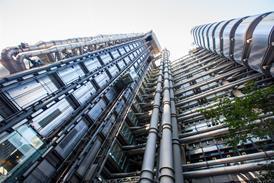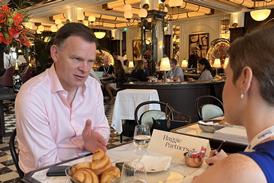Tall buildings have long presented a nightmare scenario to firefighters, but the World Trade Centre fire compounded this risk. Peter Bressington explains the technical aspects of managing the new threats.
In the wake of 11 September, many companies are asking, what do we do now to ensure that our staff and business are safe?
It is true that the landscape of risk has changed. While all businesses are familiar with handling regular threats from fire or natural disaster, dealing with these new, "wildcard" security risks presents companies with some tricky questions. What is the real risk from a terrorist attack? How do we measure it? What security and safety measures should we take? How do we protect the business? What if, in making ourselves safer, we make it more difficult to do business?
The answers to these questions involve an analysis of:
Codes and standards have evolved to provide for safe buildings. In the vast majority of cases these standards are more than adequate to address known hazards and events. Following 11September, Arup has been involved in working with developers, occupiers and architects in analysing the performance of high rise buildings in order to understand how buildings and occupants are likely to respond to an extreme event.
We encapsulate the concerns expressed by occupants, owners, architects, engineers, and authorities by addressing the issues likely to impact on the design and management of buildings. These are: fire resistance; evacuation; building robustness; evacuation management and training; and risk perception.
To address the issues and concerns accurately we applied risk management techniques more comprehensively than is usual for office and residential buildings. This approach pulled together three inter-related processes: evaluation of the risk; analysis of the technical challenges and development of design solutions.
It should be stressed that it has not been the intention to come up with a package of design measures that will make a high-rise building totally resistant to an extreme event, for example an aerial attack.
What is being implemented and considered on a risk and value basis is a suite of potential design solutions that add to the overall safety of a tall building.
Whereas phased evacuation of a building is the norm in a conventional emergency, the nature of an extreme event like terrorist attack makes simultaneous evacuation of all the occupants desirable. This means at least one stairway should be designed to maintain escape route integrity. This in turn requires:
The building design must also allow rapid access of firefighters to all parts of the building.
A sophisticated management and training regime should be instituted, so that both staff and occupants respond rapidly and appropriately to the gamut of possible events. Good communications, using all means from the conventional to IT devices, including the building's electronic management system, should be in place.
We examined the behaviour of steel and concrete in normal fires, and assessed how well materials and passive fire protection systems designed to withstand these perform against the more rapid growth of a hydrocarbon fire (as from aircraft fuel). Notably, the incorporation of polypropylene fibres in concrete mix can reduce spalling in high temperatures. This bubbling of oxygen within the mix leads to explosion. But more research is needed on the performance of passive fire protection systems, the manufacturers of which now need to test their products in hydrocarbon fires.
We studied and analysed how tall buildings and their elements may respond to impacts, fuel explosions, bomb blasts and fire. Among our researches was an examination of tie details in typical floors of a dozen Australian high rise buildings.
Our investigation of current design guidance on dynamic robustness - structural design measures to mitigate the likelihood of progressive collapse -- shows the need for a rethink in the light of advances in analytical techniques and understanding of structural behaviour.
We concentrated on the implications of designing a floor to withstand the impact of one above collapsing onto it, and our analyses showed the crucial role of ductility (the ability of metal to stretch and deform without breaking) in connection details. Though there are other approaches to design for resisting progressive collapse, increasing ductility in all beam end connections is likely to be both effective and inexpensive.
Finally, we tackled the broader issues of how to compare and assess the risks of attack on particular buildings, and how to decide on suitable protection. Visual matrices are useful, showing for example the likely frequency of risks plotted against their consequences (from negligible to catastrophic), with input from the best technical expertise.
Any solution for managing security and safety risks must be prepared within the holistic context of the business: it must meet the needs of the business for safety and protection while accommodating and supporting the day-to-day operations of the business, and it must be practically implementable.
The approach we are using incorporates three inter-related processes; risk identification, risk analysis, and design of an implementable solution. A wide range of skills has been used to understand the issues, evaluate the risk, analyse the technical, organisational and business challenges posed by both risks and solutions, and develop design solutions that provide the company with viable risk management.
It would be enormously helpful if the insurance industry looked favourably on a system whereby tall buildings are assessed using a semi-quantified risk methodology. In this way the value of mitigation measures would be valued and it is hoped that the resulting real risk profile would have an effect on the insurance premium applied. Perhaps consideration could be given. It may even be possible to apply a grading system to high-rise buildings.
The events of the 11 September challenged our perception of safety - we should draw upon the lessons of that day, but we must also keep the risk of an extreme event firmly in perspective.
--









































